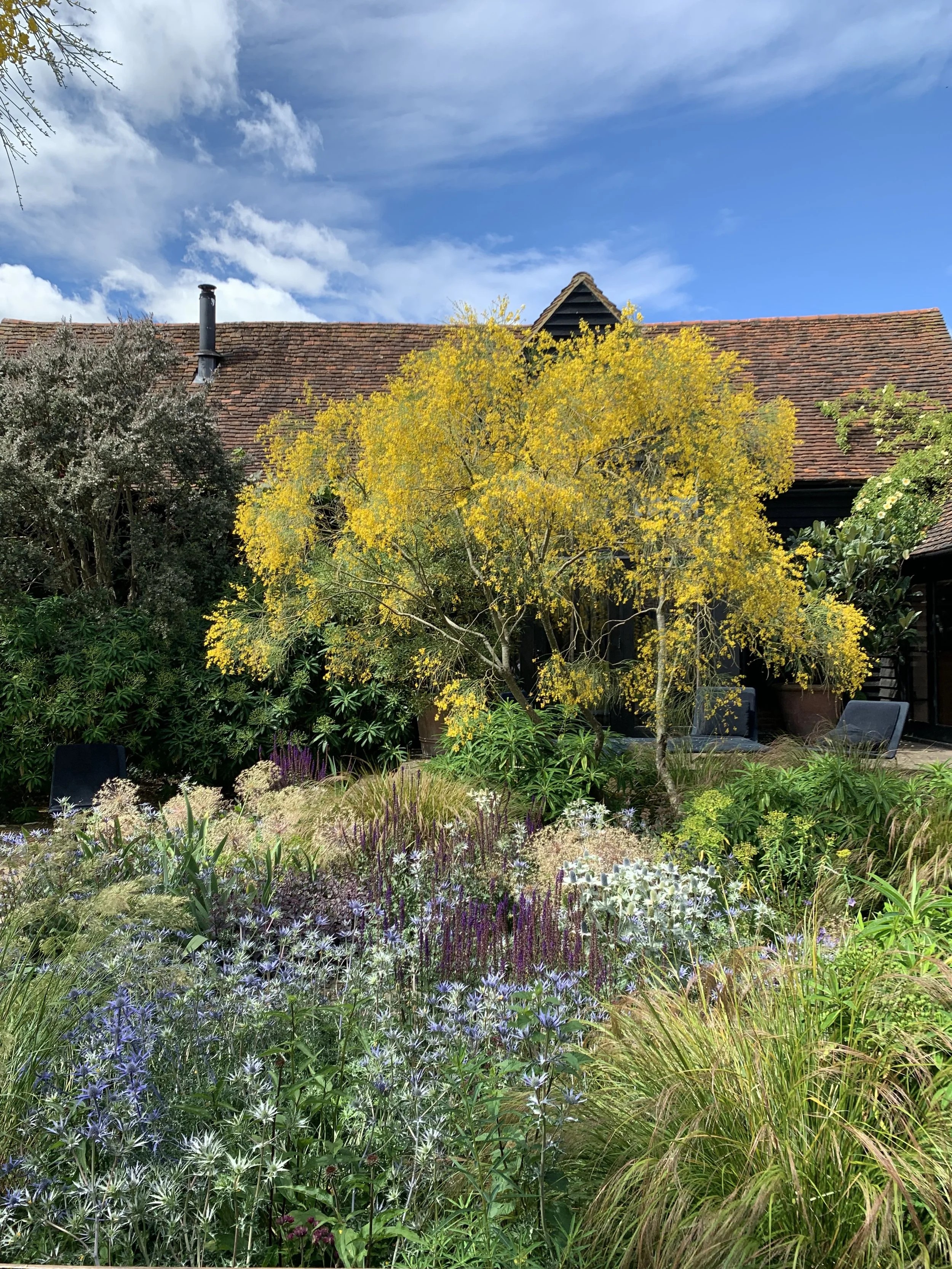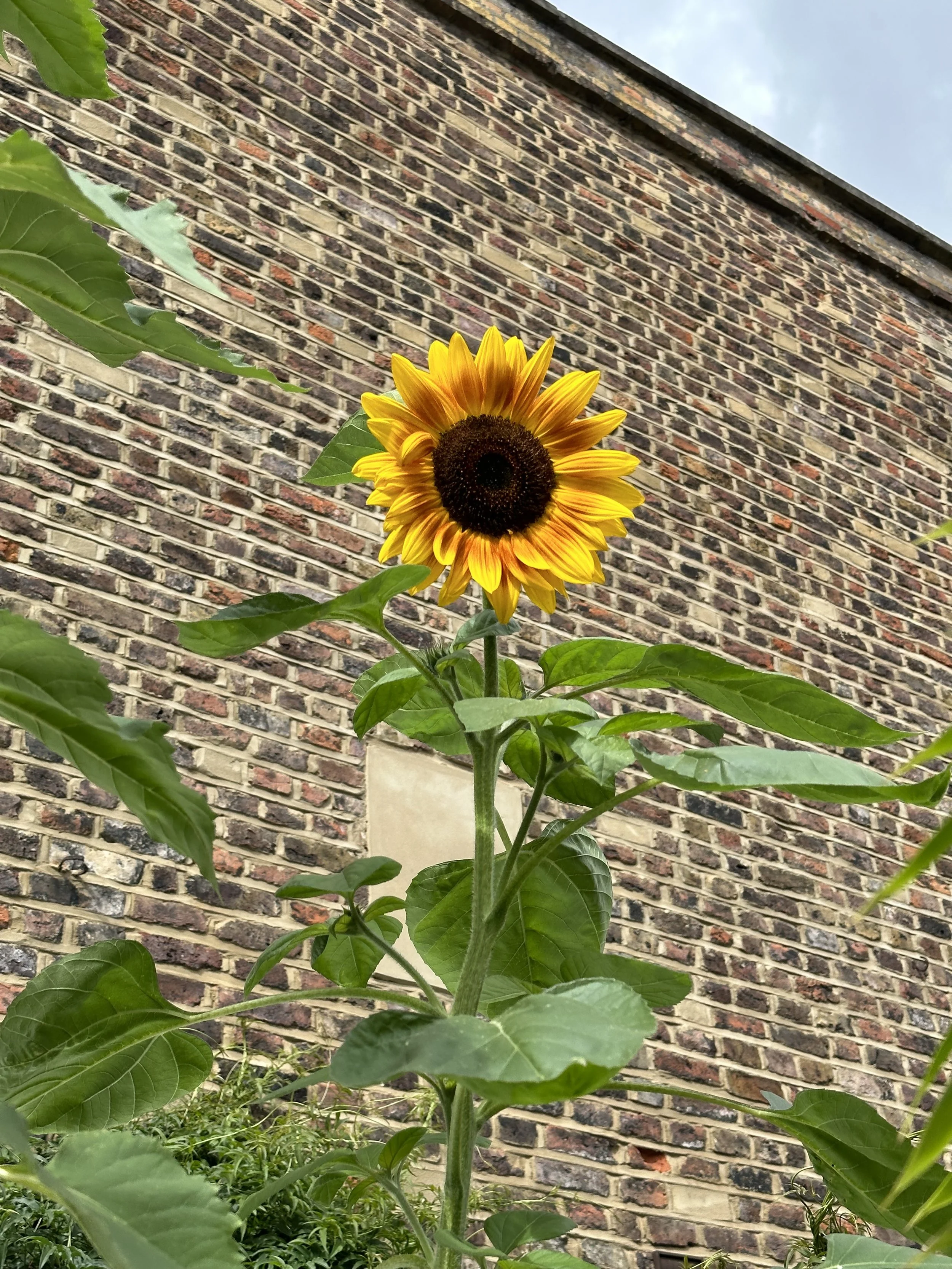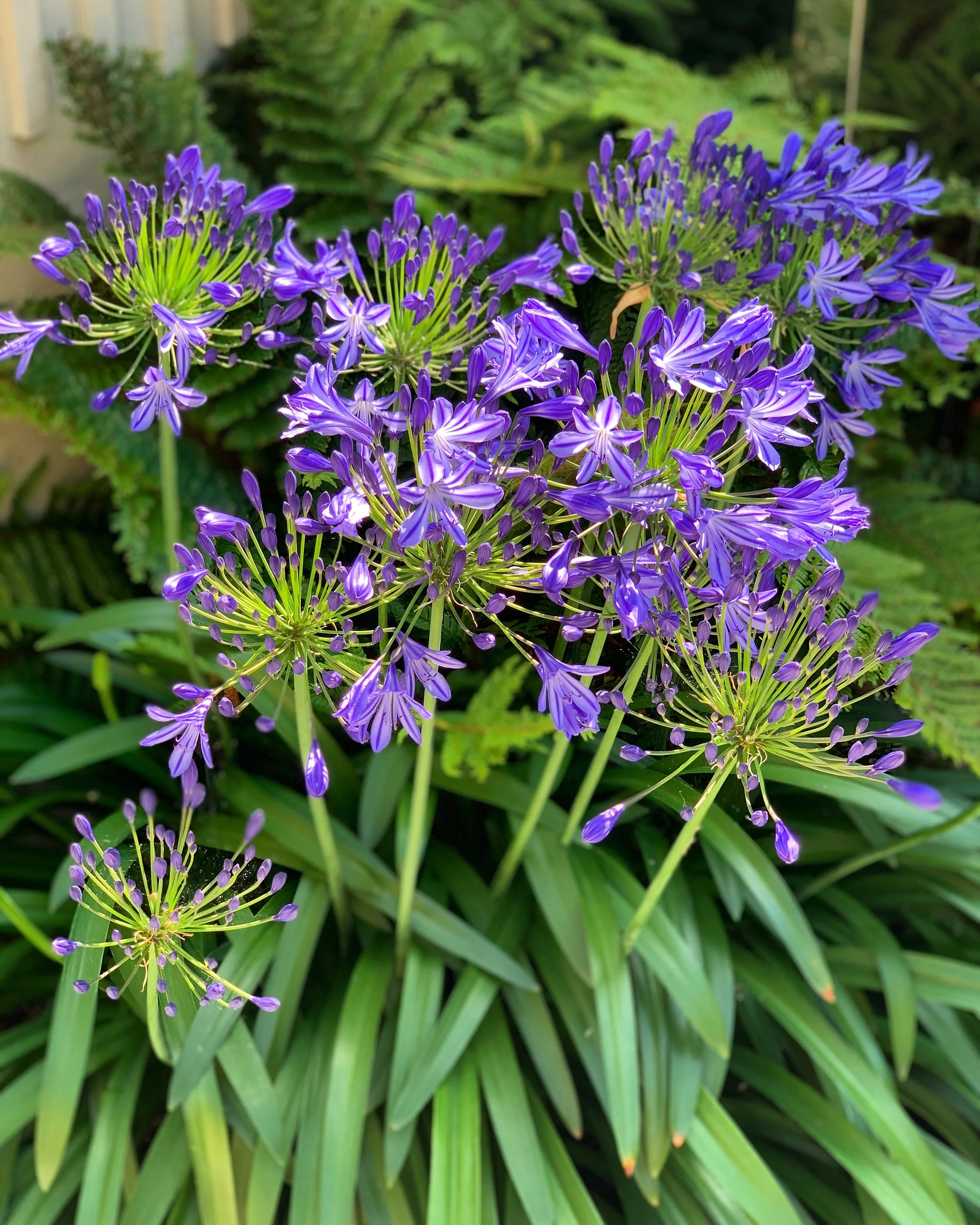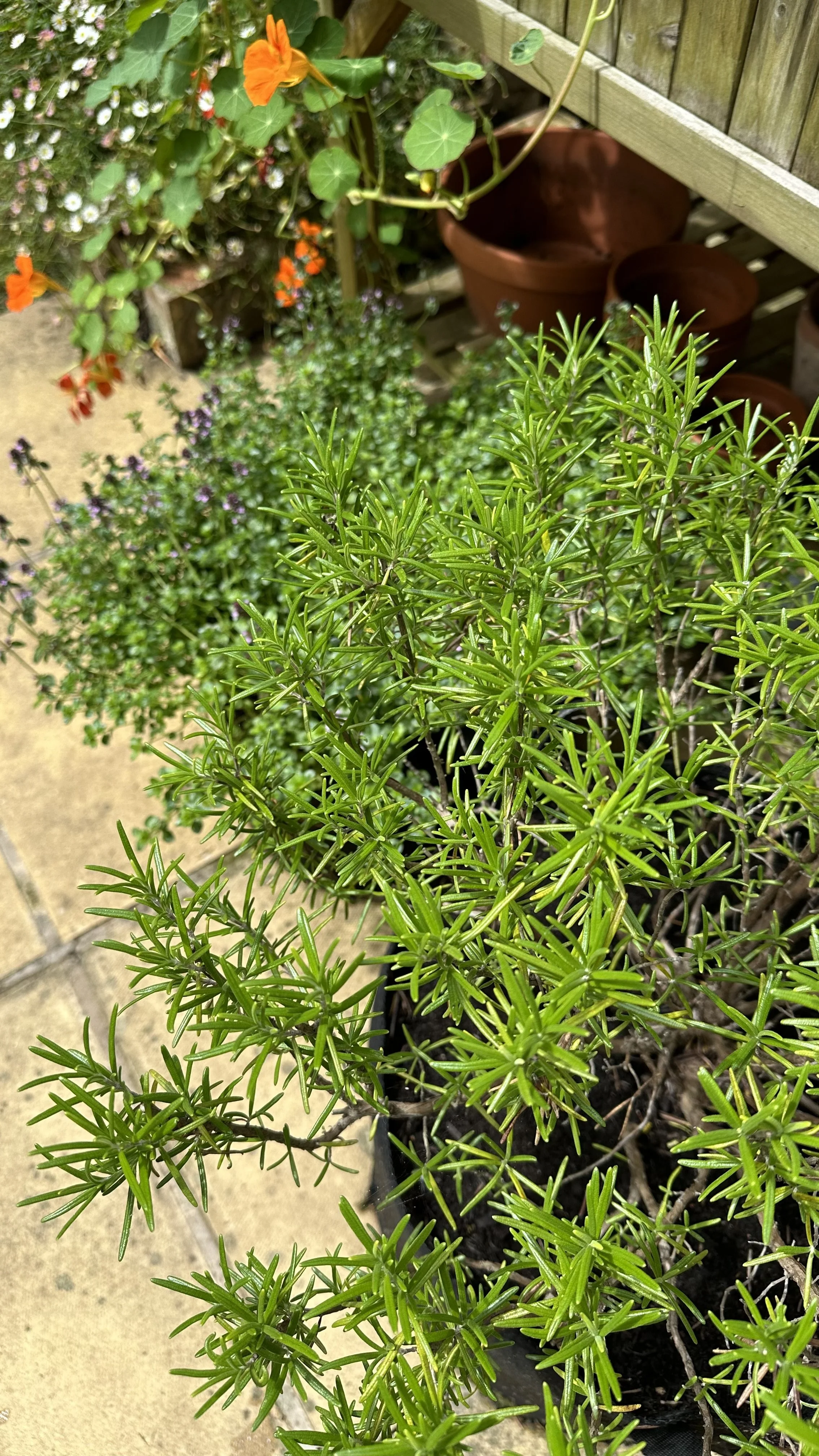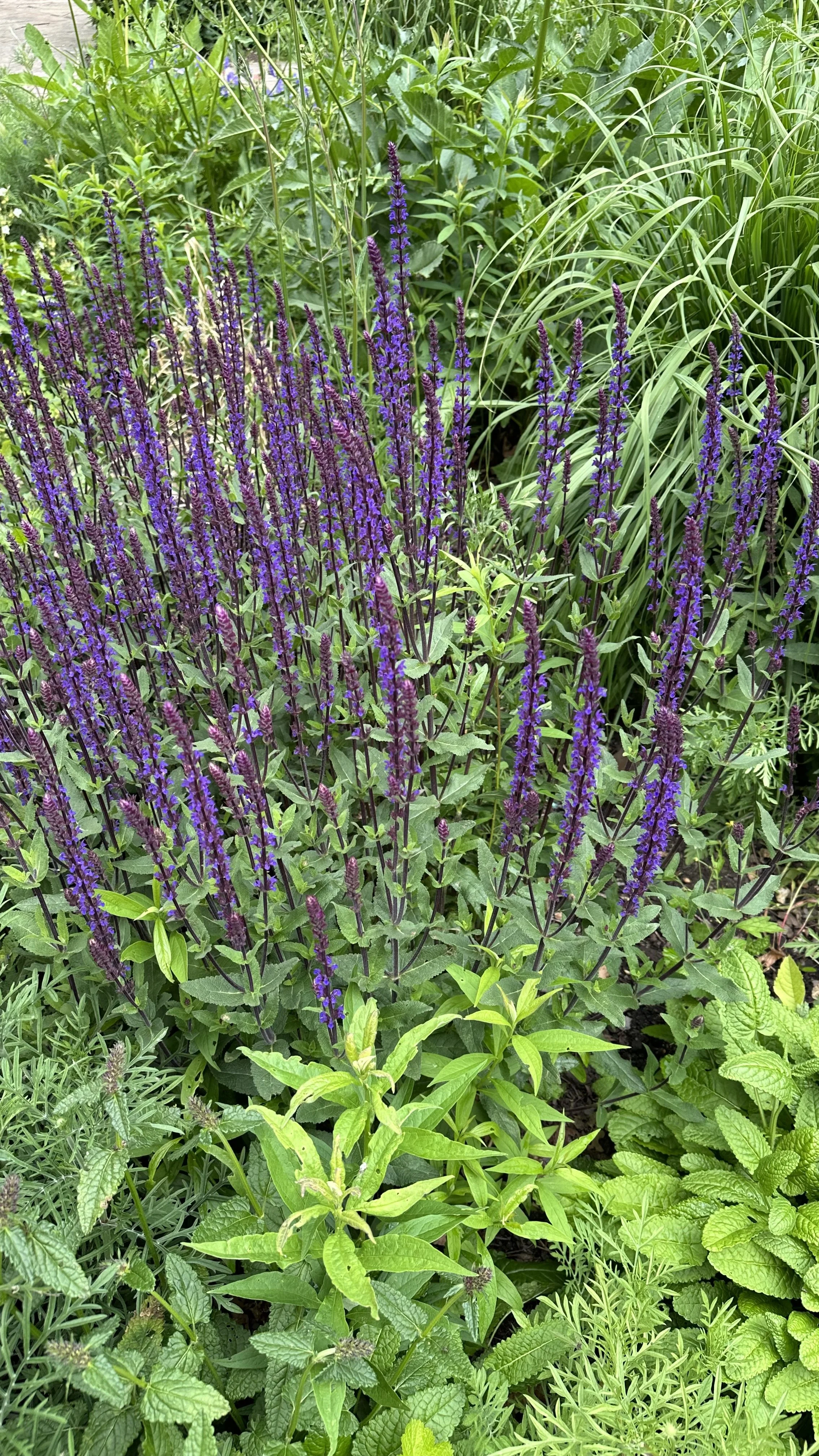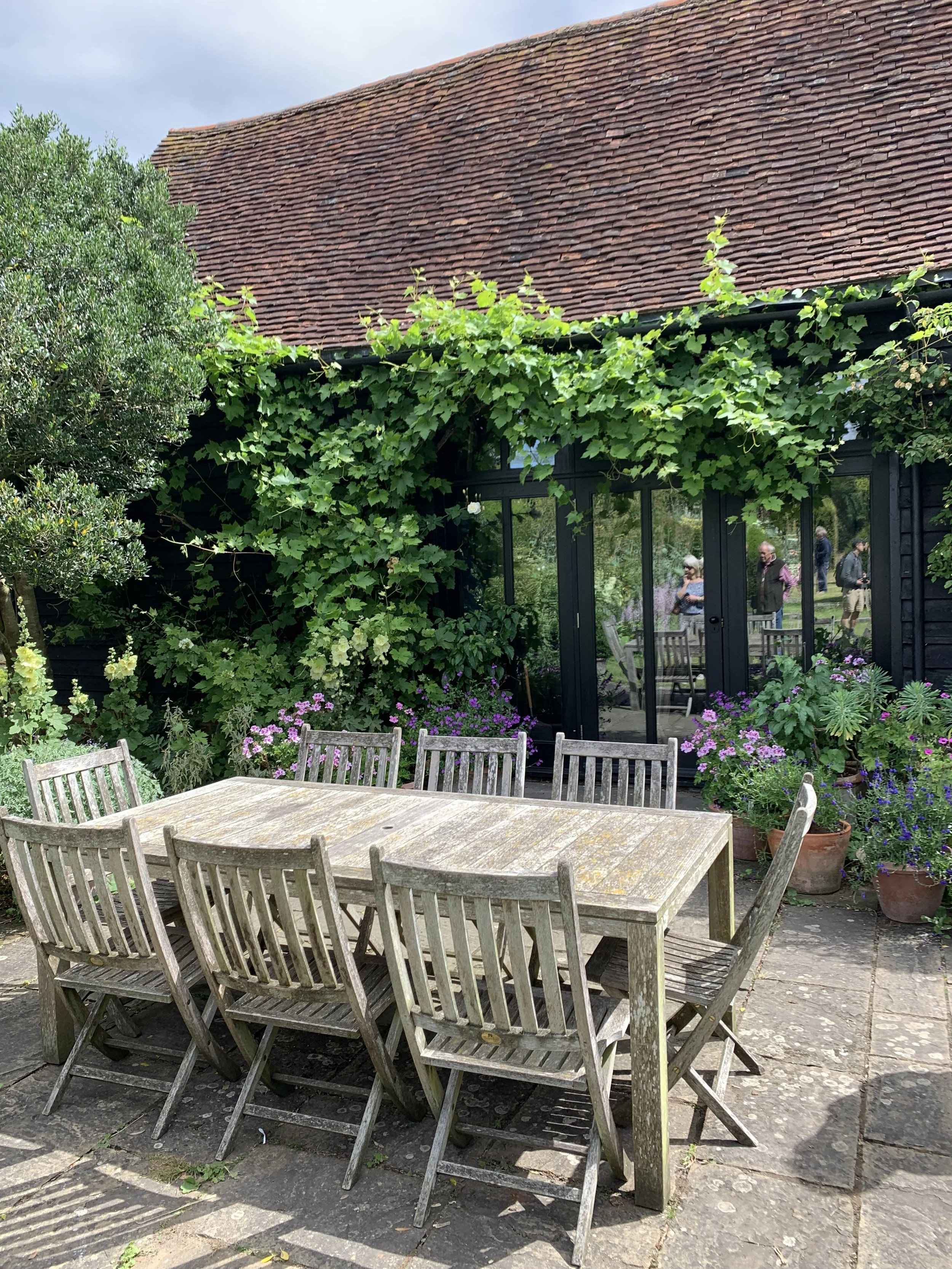The Best Plants for a South Facing Garden
This article has links to products that I may make commission from.
Imagine stepping into your garden on a sunny morning, greeted by a burst of vibrant colors and fragrant blooms.
A south facing garden can offer you just that.
But what exactly is a south facing garden, and why is it important for gardening?
A south facing garden refers to a garden that receives ample sunlight throughout the day, as it is positioned facing towards the south.
Sunlight is a vital factor in plant growth, as it fuels the process of photosynthesis, where plants convert sunlight into energy to fuel their growth and flowering.
Therefore, the orientation of your garden can significantly impact the success of your gardening.
Here we will explore the concept of sunlight and its impact on plant growth, and highlight the benefits of having a south facing garden.
I will also provide you with a list of the best plants that thrive in full sunlight, along with tips for gardening in south facing gardens and design ideas to create a beautiful outdoor space.
So, let's dive in and learn how you can make the most of your south facing garden.
Check out my other guides to the best plants for your garden based on which direction your garden faces:
What Does South Facing Garden Mean?
South facing garden meaning: A south facing garden refers to a garden or outdoor space that faces towards the south direction, receiving ample sunlight throughout the day.
In the northern hemisphere, south facing gardens receive the most sunlight during the day, as the sun moves from east to west in the southern part of the sky.
If your garden faces south it will tend to be warmer and receive more direct sunlight compared to gardens facing other directions.
The orientation of a garden can have a significant impact on plant growth and overall garden performance.
Gardens that face south receive more sunlight, which is essential for photosynthesis, the process by which plants convert sunlight into energy for growth and flowering.
This increased sunlight exposure in a garden that faces south can create optimal growing conditions for a wide range of plants.
The amount of sunlight a garden receives depends on various factors such as the latitude, local climate, surrounding buildings or trees that may cast shadows, and the time of year.
South facing gardens are generally considered favorable for gardening, unlike north facing gardens, because of the ample sunlight they receive, making them suitable for a wide range of plants that thrive in sunny conditions.
For more inspiration, check out my guide:
Benefits of a South Facing Garden
Ample Sunlight Throughout the Day
One of the significant benefits of having a south facing garden is that it receives abundant sunlight throughout the day.
As the garden is positioned facing towards the south, it can capture sunlight from sunrise to sunset, maximizing the exposure of plants to this essential natural resource.
This prolonged exposure to sunlight provides plants with the energy they need for photosynthesis, the process by which they convert sunlight into energy to fuel their growth and flowering.
Crucial for Photosynthesis and Plant Growth
Sunlight is crucial for photosynthesis, which is the process by which plants manufacture their food using sunlight, carbon dioxide, and water.
During photosynthesis, plants produce glucose, a form of sugar that provides them with the energy they need for growth, reproduction, and other physiological processes.
The more sunlight a plant receives, the more efficiently it can carry out photosynthesis, leading to healthier and more robust plant growth.
In a south facing garden, where sunlight is abundant, plants can thrive and reach their full potential, resulting in lush foliage.
Creation of Ideal Microclimates
Another benefit of a south facing garden is that it can create microclimates that are ideal for certain plant species.
Microclimates are small-scale climatic conditions that can vary within a larger area, such as a garden, due to factors such as sunlight exposure, wind patterns, and temperature fluctuations.
In a south facing garden, the increased sunlight exposure can create warmer and drier microclimates compared to other parts of the garden.
This can be beneficial for sun-loving plants, such as succulents, Mediterranean herbs, and cacti, that thrive in hot and dry conditions.
These microclimates can also provide favorable conditions for specific plant species that require warmer temperatures or protection from frost, extending the range of plants that can be grown in the garden.
For more garden design ideas, check out my guide:
The Best South Facing Garden Plants
Choosing the right plants for south facing garden can make all the difference in creating a thriving outdoor space.
With ample sunlight and optimal growing conditions, south facing gardens are ideal for a wide range of plant species.
Here are the plants I recommend for a south-facing border planting plan:
Sunflowers (Helianthus spp.)
Sunflowers are known for their stunning bright yellow or orange blooms.
They are annuals that prefer full sunlight and well-draining soil.
Sunflowers are low-maintenance plants that require moderate watering and can grow quite tall, making them a statement plant in any garden.
They are also excellent for attracting pollinators such as bees and butterflies.
Check out my guides to the best time to plant sunflowers and when to harvest sunflower seeds.
Here are my favorite sunflower seeds for planting:
Lavender (Lavandula spp.)
Lavender is a perennial herb that thrives in full sunlight and well-draining soil.
It is known for its fragrant purple or blue blooms and silver-green foliage.
Lavender requires minimal water once established and is relatively low-maintenance.
It is a popular plant for attracting pollinators, such as bees and butterflies, and is also known for its calming properties and culinary uses in teas.
My recommended lavender for a south-facing garden:
To learn more about growing lavender, check out my guides:
Agapanthus (Agapanthus spp.)
Agapanthus, also known as Lily of the Nile, is a stunning perennial plant with tall stalks topped with clusters of trumpet-shaped blooms in shades of blue, purple, or white.
They prefer full sunlight and well-draining soil, and are relatively low-maintenance.
Agapanthus can also tolerate periods of drought once established and are excellent for adding vertical interest to a south facing garden.
Here is the agapanthus I recommend for a south-facing garden:
Check out my guide:
Rosemary (Rosmarinus officinalis)
Rosemary is a popular culinary herb that also makes a great addition to a south facing garden.
It prefers full sunlight and well-draining soil, and is drought-tolerant once established.
Rosemary is known for its aromatic foliage and blue flowers, which can attract pollinators such as bees.
It is also a natural pest repellent, making it a beneficial plant for deterring pests in your garden, including cats.
Here is the rosemary I recommend planting:
Check out my guide to how to propagate rosemary.
Daylilies (Hemerocallis spp.)
Daylilies are hardy perennials that come in a wide range of colors and can add a pop of color to any south facing garden.
They prefer full sunlight to partial shade and well-draining soil.
Daylilies are relatively low-maintenance and require moderate watering.
They are also known for their attractive grass-like foliage and can be divided and propagated to create more plants over time.
Here is the daylily variety I recommend for south-facing gardens:
Check out my guide:
Salvia (Salvia spp.)
Salvia is a perennial plant that comes in many different varieties and colors.
They prefer full sunlight and well-draining soil, and are relatively low-maintenance.
Salvia is known for its long spikes of tubular flowers that can attract pollinators such as bees and hummingbirds.
Some varieties of Salvia also have culinary or medicinal uses, making them not only beautiful but also functional plants for your south facing garden.
Here is the salvia I recommend for your south-facing garden:
To learn more about growing salvia, check out my guides:
Geraniums (Pelargonium spp.)
Geraniums are popular flowering plants that come in many different colors and varieties.
They are excellent for containers, hanging baskets, and borders, making them versatile plants for your south facing garden.
Check out my guide to deadheading geraniums in order to encourage new blooms.
My recommendation for geraniums for south facing gardens:
For more inspiration, check out my guide:
Tips for Gardening in a South Facing Garden
Soil preparation
Good soil preparation before planting is crucial for healthy plant growth in a south-facing garden.
Make sure the soil is well-draining and rich in organic matter.
Amend the soil with peat-free compost or other organic materials to improve its fertility and water retention capacity.
Here is the peat-free compost I recommend using:
Watering practices
Watering is a critical aspect of gardening, especially in a south facing garden that may receive more direct sunlight.
Water your plants deeply and regularly, avoiding shallow watering that can lead to shallow root growth.
Water early in the morning or late in the evening to reduce water evaporation and prevent water stress during hot periods.
For this, you can use rainwater collected from a water butt.
For more watering tips, check out my guide How to Use Watering Globes.
Proper plant placement
Consider the specific sunlight requirements of each plant and place them accordingly in your south-facing garden.
Place sun-loving plants that require full sunlight in the sunniest areas, while providing partial or filtered shade for plants that prefer partial sunlight.
Proper plant placement ensures that each plant receives the optimal amount of sunlight for its growth and blooming.
Mulching and pruning
Mulching is essential in a south-facing garden to retain soil moisture, regulate soil temperature, and suppress weeds.
Apply a layer of organic mulch, such as shredded leaves or wood chips, around the base of your plants.
Here is the mulch I recommend:
Regular pruning is also important to maintain plant health and promote bushier growth.
Prune your plants regularly to remove dead or damaged branches, improve air circulation, and stimulate new growth.
Providing shade during extreme heat
During periods of extreme heat, your south-facing garden may be subjected to intense sunlight and high temperatures.
Consider providing temporary shade for your plants using shade cloth, umbrellas, or other shading techniques to protect them from heat stress and sunburn.
Dealing with drought or heat stress
South facing gardens may be more susceptible to drought or heat stress due to increased sunlight exposure.
To overcome this challenge, water your plants deeply and regularly, and consider using drought-tolerant plant species.
Applying a layer of mulch around your plants can also help retain soil moisture and reduce water evaporation.
Garden Design Ideas for South Facing Gardens
Here are some garden ideas for the designing a stunning south facing garden.
Color schemes:
When designing a south facing garden, consider using a color scheme that complements the natural sunlight.
Bright and bold colors can thrive in the abundant sunlight of a south facing garden, creating a vibrant and eye-catching display.
Consider using warm colors like reds, oranges, and yellows, which can thrive in direct sunlight and add a burst of energy to your garden.
Geums are great for a pop of orange.
Check out my guide: Growing Geums: A Complete Guide.
Plant arrangements:
The arrangement of plants can greatly impact the aesthetics of a south facing garden.
Consider grouping plants with similar sunlight requirements together, creating pockets of varying heights, textures, and colors.
This can add depth and visual interest to your garden.
You can also use taller plants as focal points or backdrops and shorter plants as fillers or groundcovers to create a dynamic and balanced look.
Focal points:
Adding focal points to your south facing garden can draw attention and create a sense of purpose.
Consider incorporating a striking sculpture, a unique plant specimen, or a water feature as a focal point in your garden.
This can serve as a visual anchor and add interest to your outdoor space.
Pathways:
Pathways can not only add functionality to your garden but also contribute to its design.
Consider adding curved or winding pathways made of natural stone, gravel, or pavers to create a sense of flow and movement in your garden.
Pathways can also be used to guide visitors through different sections of your garden and highlight key features.
Seating areas:
Creating inviting seating areas in your south facing garden can encourage relaxation and enjoyment of the space.
Consider adding benches, chairs, or a cozy outdoor living area where you can sit and admire your plants.
You can place seating areas in shaded or partially shaded spots to provide respite from the direct sunlight during hot periods.
Water features:
Water features, such as fountains, ponds, or waterfalls, can add a soothing and refreshing element to your south facing garden.
The sound of flowing water can create a relaxing ambiance and attract birds and other wildlife to your garden.
Water features can also serve as focal points and enhance the beauty of your outdoor space.
For more design ideas, check out my guides:
A garden that is facing south can be a gardener's paradise, with ample sunlight, ideal microclimates, and a plethora of plant options to choose from.
It's important to carefully choose suitable plants for your south facing garden based on their sunlight requirements, water needs, and maintenance requirements.
Implementing these tips can help you create a thriving and beautiful garden that you can enjoy throughout the year.
With the right plant choices your south facing garden can become a flourishing oasis that brings you joy as you watch your plants thrive and bloom.
